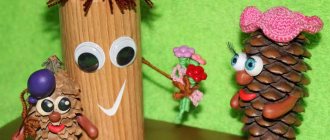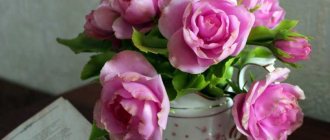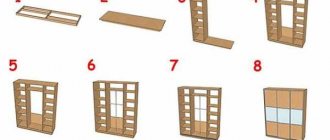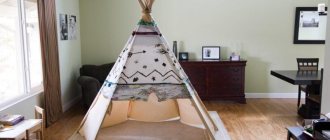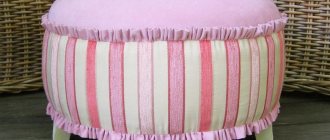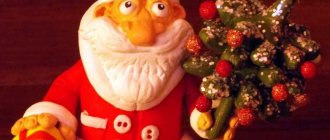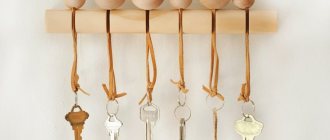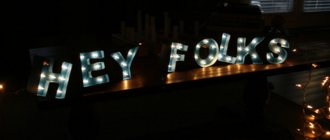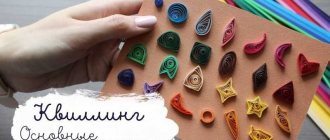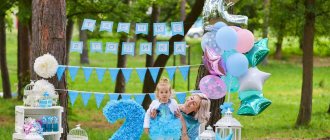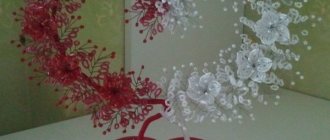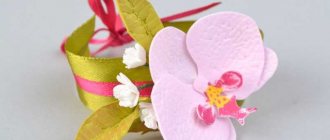The simplest type of crafts are applications using cereals. In every house, housewives have unused cereals. Therefore, the material is very affordable and easy to use.
To perform such crafts you do not need to have certain knowledge and skills, everything is very simple. Even a child can cope.
Execution technique
The most common techniques when using this material are:
- sprinkling;
- indentation
For the first type, you will need to draw the outlines of the design on a piece of paper. It is best to take colored cardboard. Drawings for crafts made from cereals are thought out in advance, in advance, or are found on the Internet and printed. Then you need to cut it out and glue it onto cardboard.
Next, you need to grease the pattern with PVA glue. For starters, you can use buckwheat, millet cereal and rice. These materials are easier for children to work with.
The next step is to pour the cereal onto the contours of the parts and press down a little so that it sticks. You can shake the excess onto a piece of paper.
For the second type, instead of glue you will need plasticine. Creating a drawing on cardboard is the same. The resulting contour is filled with plasticine. Next, the cereal is taken and pressed into it. For this work, you can take peas, coffee beans, beans, and seeds.
In order to develop imagination in children, you can fill the entire sheet with plasticine and let the child come up with what to depict on the sheet.
Crafts made from plasticine and cereals are suitable for kindergarten when you need to do something using natural materials.
These two techniques are easy to use, but if the child masters them perfectly, then you can create works of a complex level with him.
Step-by-step instructions for applying squirrel from cereals
On a prepared white sheet of paper, draw the squirrel itself. This can be a random design, but large enough so that there is space for the child to fill. You will need to fill in the drawing with cereals. Be sure to show off the paws, ear tufts and bushy tail. Prepare portions of buckwheat, which is as similar as possible to a squirrel’s fur coat (if you don’t have it, you can also replace it with peas), and semolina to highlight the tip of the tail and chest.
Gradually fill the fragments of the pattern with PVA glue. This is a liquid glue that does not dry immediately, so it is convenient to work with. First fill in the spot on the face, chest and tip of the tail. Sprinkle these areas generously with semolina on top. Using your fingers, spread the cereal over these islands. Then brush off any excess when you are sure the glue is dry. If necessary, adjust these areas a little if you see gaps. Thus, it becomes clear that the craft must be done in several stages, each time waiting for the previous layer of glue to dry. Now fill the rest of the drawn squirrel with the same composition.
Fill these spaces with larger buckwheat groats. In this case, the grains are heavier, but they will still stick well to PVA glue. To further decorate the squirrel figurine, as well as to mark some fragments, use brown plasticine. Make ear tassels and glue them on top of the protrusions above the head. Add an eye to the white island on the face. Attach a black ball instead of a nose. And insert a nut into the squirrel’s paws. This is such a wonderful application that you can create. After complete drying, you can place the craft vertically and remove all excess. And if necessary, apply spot glue with glue and add grains. It is also easy to place a squirrel on a branch. Find any branch of a spruce or other tree and stick it at the bottom of the applique so as to show that the animal is sitting on it. Now this is definitely an interesting model. You can consider it an applique made from natural materials. This is a craft for preschool children, as well as for all those who love wonderful creative experiments. And this experience will definitely be successful.
0
Decorative panel of cereals
The most interesting craft for children using cereals is creating a picture. The first time you perform it, you need adult supervision. Before starting work, you need to prepare cereals of different colors, cardboard, glue, and paints.
First you need to select cardboard in the color you are making; if this is not available, then paint it with paints. It is important to draw a sketch of all components of the picture. Then all this is smeared with glue and covered with various types of cereals, beans, and seeds.
For ease of implementation, you can find a sample, or think in advance which part should be filled with which grain. You can create step-by-step examples for your child, or find ready-made ones on the Internet.
Master class with children 3–7 years old “Applique from cereals”
Nadezhda Lukyanova
Master class with children 3–7 years old “Applique from cereals”
Compiled by: additional education teacher
Lukyanova N. E.
Making applications from cereals is very useful for children, as sorting through cereals promotes the development of fine motor skills of the hands, perseverance, and helps develop imagination, creative thinking and imagination.
your first acquaintance with cereal applique with simple and large designs that use 1 type of cereal . And then gradually make it more difficult in subsequent classes.
Having studied this simple technique and showing a little imagination, your child will certainly be able to create real masterpieces and delight their parents with their creativity!
Materials and tools:
- various cereals (buckwheat, millet, rice, etc.)
;
- colored cardboard (paper)
with a drawn picture;
- PVA glue, brush;
- napkin;
- paints or pencils, colored paper.
Making applications from cereals :
1. Show the child the drawing and offer to play - carefully place various cereals , as if coloring the drawing with cereals .
If the child finds it difficult, then you can show how to do this carefully, align the cereals according to the outline of the drawing .
2. After the child has finished laying out, ask why he used these particular cereals ? Does he want to change something or does he want to leave it that way? You can offer your own version of “coloring”
with cereals .
3. Write exactly the same drawing on another cardboard (paper)
or remove
the cereals from this (if the child does not mind, then start gluing the cereals and creating an applique .
If the child has already made such applications , you can skip points 1-3.
4. If the application will consist of one type of cereal , then apply glue to the entire picture (without protruding beyond the contours)
and cover
with cereal .
Then press with a napkin and hold for 20-40 seconds. If the application consists of a combination of cereals , then glue must be applied only to those parts of the design that will be covered with one type of cereal . Then press with a napkin and hold for 20-40 seconds. Next, glue is applied to the next parts of the picture and covered with other , etc. d.
5. Excess grains must be shaken off, and empty spaces, on the contrary, must be filled.
6. When the applique dries , you can ask the child to add a drawing that suits the theme. Alternatively, a child can draw a beautiful landscape with paints or pencils, and complete the work with colored paper.
Creative success!
Cereal applications
The first type is flat applique. You need to take a sheet of cardboard and draw a sketch on it. It can be a drawing, a pattern, a variety of ornaments. The inner parts of the contour must be filled with glue. Cereals, grains, seeds, and so on are poured on top.
You need to determine where what color is needed and stick to the idea. This is important in order to get the image. It turns out flat because everything is on the same surface and at the same level.
Another type is called volumetric applique. The peculiarity of this work is that it requires a volumetric base to complete. You can make it yourself from polystyrene foam, plastic, it can be a bottle, a tin can. You can also purchase special ones in the store.
Since the surface on which the materials are to be glued is not smooth, and the process becomes more complicated, PVA will not cope in some cases. It is necessary to use silicone, hot melt and super adhesive adhesives.
Work should be performed under adult supervision.
Application "Porcini mushroom"
Kindergarten children rarely make crafts from cereals, so such a task may be interesting to them.
It is very important to do such applications under the supervision of a parent or teacher.
What you will need for work:
- buckwheat, rice;
- a sheet of thick cardboard;
- plasticine to match the color of cardboard or the color of cereal;
- markers or paints.
What you will need to do:
- Fill the entire contour of the mushroom with plasticine.
- Pressing gently, fill the mushroom cap with buckwheat and the stem with rice.
- You can use felt-tip pens or watercolors to decorate the background, making the resulting applique complete.
These mushrooms are made quickly and are suitable not only for individual work, but also for team work.
Children's crafts
For children, the process of creating crafts from cereals and seeds is not only an exciting activity, but at the same time, working with such materials helps develop fine motor skills.
As the work progresses, attention develops, coordination noticeably improves, the child becomes more patient, more diligent and learns to be careful. You can also note that when you touch granular substances, you get a massage of your fingertips.
You can make a “Sunflower” craft. To do this, draw this plant on cardboard. Each part is laid out in a different way. The inside of the flower can be lined with seeds, flower petals with millet, or semolina painted yellow.
In order to make a craft from grain and cereals, you will need a glass bottle, glue and elements for decoration.
The part that needs to be decorated is primed, grains and cereals are attached to it in the form of patterns, which can be alternated with stripes. The end result will be a beautiful bottle for decoration.
Cereals and flakes as material for creativity
Crafts made from cereals are the best way to keep your child occupied for the benefit of his development. Perhaps Cinderella's stepmother was not so wrong when she forced her to sort through the cereal, separating grain from grain. Such activities develop fine motor skills of the hands, which has the most beneficial effect on the child’s mental abilities.
Various cereals have different textures: by sorting through them, the child develops tactile sensations. In addition, even the simplest options for crafts made from cereals for children develop their creative abilities and awaken their imagination.
Most often used for work:
- red and white beans;
- split peas;
- millet;
- buckwheat;
- semolina.
In the kitchen cabinet you can find other materials for creativity: coffee beans, pumpkin seeds, pasta of various shapes. All of them are used to create original crafts for the home.
Decorative topiary from cereals
Making this craft can have several uses. First of all, they can decorate a room and make it match the interior. You can also take part in exhibitions at school and kindergarten:
- The foam ball is painted green with a brush. After this, you need to take time for everything to dry. Using a skewer, a small hole is made at the bottom; this is necessary to insert the barrel.
- Slowly, the gluing of the peas begins. To do this, coat a small area with glue and attach peas to it (preferably split ones).
- After the entire ball is filled, it is left overnight.
- When everything is dry, the ball is inspected and the voids are filled with peas. The barrel is attached to the hole using glue.
- You need to take a pot that was specifically purchased for topiary. It should be filled with floral foam filling. Then the barrel is stuck in. The area in the pot needs to be filled with moss.
- The craft turned out to be complete.
- It turned out to be original, simple and will delight the child. He will see his results.
- You can also use coffee beans instead of peas.
Small home decor items
It's easy to make topiary that will decorate the interior of your home. Before you make a craft from cereal at home, stock up on the following materials:
- a small flower pot, bowl or mug;
- a strong but short tree branch or stick for the trunk;
- foam ball;
- cereals or coffee beans;
- small decor, ribbons;
- glue;
- gypsum.
First you need to strengthen the trunk in a container by pouring gypsum into it. Then use glue to secure the foam ball to the barrel. Using glue and grains, form a ball. You can pre-paint the base with acrylic paints.
Attach the decor: voluminous flowers and butterflies, leaves. Wrap the topiary trunk with floral tape or satin ribbon or tulle. Decorate the container in the same style. You can use burlap, sisal, etc.
The simplest master class on crafts from cereals:
- take a bottle or small vase made of transparent glass;
- pour a little grain of one type on the bottom;
- Carefully, so that the grains do not mix, pour a layer of other cereals or seeds on top, preferably of a contrasting color and a different texture;
- fill the container layer by layer. It can become a kitchen decoration or a vase for a composition of dried flowers.
Be inspired and impressed, come up with your own ideas for crafts from inexpensive and always available materials. Involve children in creativity, and your home will become unique, filled with the warmth of the soul invested in every craft.
Read here: Crafting a mug: a master class on making your own from plastic, cardboard and waste material (75 photos)
Painting
In order to make a spectacular picture with cats you will need black and white beans, a work surface, glue, a brush, and a pencil.
An image of two cats is drawn on the canvas. And there is a circle around them. Using paints and a brush, animals and the area around are painted. It will be easier for children to navigate which color of beans to glue.
The dark ones are attached to the black areas with glue, and the area around the cats is smoothed with white beans. The result is a painting that can be used to decorate a room or as a gift.
After completing this work and understanding the principle, you can create your own sketch and make a personal painting.
Bears in different variations
Children always enjoy creating compositions depicting animals, this is how they learn to love nature and its inhabitants. One of the popular characters is the bear - an important forest dweller, the hero of numerous cartoons and fairy tales, and simply a favorite plush friend for children.
Children in the middle group of kindergarten can be asked to make a “Teddy Bear” based on the picture shown in the photo.
To make it you should prepare:
- sample;
- white or colored paper, cardboard or plywood board (for the base);
- carbon copy;
- PVA glue;
- paints and brush;
- rice and buckwheat cereals.
First you need to transfer the picture stencil onto the base. You can use an image from a children's coloring book (circle it as a carbon copy) or print a ready-made one from the Internet. Next, glue is distributed along the contour and entire area of the bear and rice is poured on top if it is a polar bear, and buckwheat if it is a brown one.
Now you need to shake off the excess cereal and check the image for voids. If there are any, fill them with grains. After the craft has dried, you should decorate it with a landscape around the picture. A northern bear will look good against the backdrop of snowdrifts, while a brown one will organically fit into a forest clearing or a dense raspberry field.
The picture is ready. You can give it to your loved ones as a keepsake or decorate the wall of your apartment.
An original application can be made in the form of a teddy bear. This craft would be perfect as a gift for a birthday or Valentine's Day.
And, of course, we cannot ignore everyone’s favorite cartoon character - Winnie the Pooh. It can be made using millet and buckwheat.
Photo frame with magnets
To make the photo look much brighter, you can make a photo frame with your own hands, using cereals. And if you add magnets, then such products are attached to the refrigerator.
On the surface of the cardboard, the boundaries of the frame are outlined with a ruler and pencil. It should be cut out. It is necessary to think over a drawing that will decorate it. To make it easier to navigate, you can mark out the areas and imagine what type of material will be suitable.
After this, glue is applied and cereals, grains, and beans are glued.
Magnets are glued to the back side.
Children's alphabet made from cereals
Teaching a child to read always starts with the alphabet. And if the letters are three-dimensional, the baby will remember them much better and faster. In addition, you will definitely enjoy the game form of learning.
What you will need for work:
- buckwheat, rice, other cereals as desired;
- pencil;
- cardboard of light, not very bright color;
- PVA glue;
- ruler.
How to make an alphabet:
- Line the base sheet as for copybooks. The width of the stripes will indicate the height of the letters. You need to make small indents between row stripes.
- Draw letters on the lines, being careful not to protrude beyond the edges. Small spaces are also needed between the letters so that the grains do not mix. You can only draw the outlines of the letters, but it is desirable that they be at least a little voluminous, as for appliqué.
- Coat each letter with glue and sprinkle with cereal.
- When the glue is dry, carefully shake off the excess.
There is a small addition to this craft: if you draw the letters in volume, you can cut them out like templates, and only then glue the cereal. Then you will get wonderful figures that can be used in teaching.
Decoration for Christmas
A popular attribute of this holiday is the Christmas wreath. It creates a special atmosphere, improves mood and decorates the interior:
- The basis of such a craft will be a ring made of polystyrene foam, straw or a cardboard ring.
- You can make a purely craft from cereals and pasta. Since pasta comes in a wide variety of forms.
- The base should be primed in a neutral tone. Depending on where it will hang, you need to decide whether to decorate the reverse side.
- The gluing work begins from the inside and gradually moves towards the edges.
- It is best to use silicone glue.
- You can create a pattern, an ornament, and as an additional decoration you can use patterns decorated with cereals in the form of bells, stars, and Christmas trees.
- After the decoration is completed, a ribbon or linen thread is tied to the wreath.
To create a more festive option, it is best to use painted material. Gold paint in cans is also used and applied to already glued pasta.
We decorate furniture
Try to imagine how impressive a small coffee table decorated with cereals and seeds will look in the interior of a country house. To do this, it is enough to apply the outline of the design onto the base - the tabletop - and fill it with grains of different textures.
Read here: Crafts from pine cones - a review of interesting, unusual ideas and solutions. Step-by-step manufacturing instructions (85 photos)
The table will look especially impressive if you make a three-dimensional contour in a contrasting color - white or dark, depending on the color of the table. Cover the tabletop with glass and secure it.
Beans, pumpkin seeds or coffee beans can be used to decorate a mirror frame. The manufacturing principle is the same: we apply glue, attach the cereal to it and cover the frame with varnish. The varnish will additionally fix the grains and add attractiveness and durability to the interior item.
Christmas tree decorations
In order to create a Christmas tree decoration, you need to study the types of craft patterns for using cereals. The execution is very simple, children will really like it.
It is safest to use plastic balls, but it is realistic to use old and unnecessary plastic Christmas tree decorations as a base.
First, you need to pour the cereal into a plate. The ball-shaped blank is covered with glue. Next, you should roll it out in cereals. If you choose peas or buckwheat, then roll it once. When using rice and millet cereals, you need to make 2 layers.
Then the product is set aside to dry. At the end it is decorated with satin ribbons. You can find options on the Internet or come up with them yourself.
What do you need for work?
Grains of various crops and plants are needed as materials. For this purpose, grains of peas, coffee, corn and other crops are used. As additional materials, you may need various leaves, you can use beads, pieces of fabric, and so on, that is, everything that can be used to decorate the picture.
The tool kit includes the most common items: tweezers, gouache, which is used for painting grains, PVA glue, pencils, superglue, silt and aerosol varnish. The needle is used to adjust the pattern of the painting if necessary, and the finished canvas is coated with varnish.
Thick cardboard is mainly used as the basis for the future painting; packaging boxes from a hair dryer, TV and any other equipment, as well as other hard materials, are also suitable. To prevent the paintings from losing their shape and getting wet from the glue, they are not made of thin cardboard and paper, the base must be dense.
Salt dough figurines - how to make them yourself? Instructions with photo ideas.
The finished work will need a frame for framing. It can be made of wood or plastic, or any other material.
Decorating Easter eggs
Celebrating Easter is not complete without the tradition of decorating eggs. You can involve children in this work and make a craft for Easter with cereal:
- Boiled eggs must be used. Take one and apply glue to everything with a brush.
- It should be dipped into a plate of cereal, which was chosen at personal discretion.
- For example, you can roll it in millet.
- Not the entire surface can be filled. If you use your imagination, you can make a hat on the egg using cereal, and use felt-tip pens to draw a face.
- It is also possible to make different patterns on them. The main thing is to fantasize and not be afraid.
The design can be bean flowers, pea lines, alternating strips of rice and buckwheat, and so on. There are no limits to ideas.
In general, the process can be divided into several stages
Preparing the basis for the painting and materials
A drawing is first applied to the selected cardboard, plywood or other base using a simple pencil. To do this, you can use carbon paper. The outline of the sketch should be neat, even, barely noticeable and outlined with a thin line. Then you need to decide on the materials. Select the desired grains, determine the quantity and color. If necessary, the grains are colored with paint. When choosing the color of grains, you need to follow one rule - do not choose materials that are similar in color for placement in adjacent areas.
Coloring of grains
The dyeing process is not complicated, but it requires certain manipulations. The selected grain, most often rice, is placed in a container. Then add a few drops of paint to it and mix. Then the material is laid out on film and stirred periodically so that the grains do not stick together. After complete drying, you can use them.
Laying out the grains
Gradually, the pattern is filled with grains of the desired color, placing them on the glue with tweezers. To ensure that the grains lie flat, they can be straightened with a needle. After completing the creation of the design, the grains are allowed to dry and varnished using an aerosol.
Particularly popular are paintings with patterns or ornaments, as well as paintings reflecting simple geometric shapes. The finished painting needs to be placed in a frame and you can decorate the interior and be sure to take a photo of the cereal painting as a keepsake.
Baba for a teapot - master class on how to make it yourself with photo examples
Table of cereals
At the very beginning, you should remove the back part from the frame and cut a panel of the same size from plywood:
- The panel is glued to the stool using liquid nails or wood glue.
- Wood putty is used to seal the joints.
- The frame is applied to the stool and secured with 4 screws.
- To prevent the room from getting dirty, you can lay oilcloth on the floor. A layer of primer is applied to the resulting table, and after drying it is painted 2 times with the same color.
- Using a ruler and a simple pencil, mark the location with the appearance of the croup. Can be divided into squares.
- Gradually, from the first section, work begins on coating with PVA glue and attaching the cereal. And so everything is done until the very end.
- In order for the cereals to stick together, you need to apply a layer of glue on top and leave to dry.
- After it has dried, you need to place the table level and fill the tabletop with the substance. Epoxy resin is used. If bubbles appear, you need to blow on them using a straw.
After the first layer has dried (a whole night is required), it is filled with a second layer of resin. And everything dries up. As a result, the table is ready. It's nice to look at and touch.
LiveInternetLiveInternet
A variation on the theme of a “family” gift in the form of a picture of cereal...
Found this MK on zlu_4a's blog
... and as luck would have it, it was the main photo that came out badly((( So, We take cardboard, in principle its density is not important, the main thing is to take it at least a little thicker than landscape. I had a box from a children's toy. We cut it out, in my case , square (it can be a circle, a rectangle, or a triangle. Whatever your heart desires). This is the future basis of our picture. Next, we take a pencil in our hands and draw what we want to do. I was inspired by henna drawings, but not I advise you to get carried away with too detailed things (only if your picture is not the size of half the wall), otherwise the pattern will get lost and it will just be a bunch of small things.
Next we will need glue, a brush and buckwheat (it’s better to stock up on tweezers)
We are starting the uploading process...
When I was putting together this photo, I made a little mistake, as you can see, I have buckwheat first, then glue (((But in reality, of course, first you coat the part that you will be laying out with glue, and then you put the cereal on top. I advise you to always start from the center, because at some point you may get “tired” of making your picture, and then you can immediately stop it and cut off the excess cardboard, but if you start doing it from the outside going in, besides the inconvenience, you deprive yourself of the opportunity to change the drawing or finish earlier than planned. Let's move on...
After the end of the first stage of laying out the buckwheat, this is what comes out... Next, I poured some of the buckwheat, which will be the background, but you can do this later...
Let's move on to millet...
In fact, until now we have laid out contours, which are now very convenient to fill. We take glue and pour it into the resulting “pits”, and sprinkle millet on top. After which you must press lightly with your finger to “immerse” the millet in the glue...
Using this principle, we lay out our entire class=”aligncenter” width=”500″ height=”333″[/img] Now we start making contours from millet...
In this way we complete the main pattern... Next is the hemorrhagic part. I decided to show off and make an unusual frame. Use glue to “draw” stripes and then place millet on them with PINCERS. First we do it in one direction only, and then transversely
Place a grain of buckwheat into the resulting squares (I couldn’t fit any more). It is better to make squares of such a size that there is the same amount of buckwheat everywhere, otherwise it will catch your eye. That there is one grain somewhere. And somewhere there are a bunch of grains from two pieces =)) (yes, yes. Even two grains begin to seem like a bunch, against the background of one)... Next, take PVA glue and dilute it a little with some water (just don’t overdo it, it’s enough to make it more liquid). We coat our picture with the resulting liquid. We do this for additional strength, plus, I think, it should provide protection from midges (there was already a post here about a picture made from cereals. And there they discussed the problem of flies in the picture. You can coat it with varnish, but I don’t have varnish , but there is glue! So I tried to spread it with glue, let's see what happens)))
Apply without hesitation, the picture should turn white. After such a procedure, you will most likely, or rather 100%, be faced with a bend in the cardboard as you see in the photo. It's not scary. Just put the picture under the press (while it is still wet, i.e. immediately after spreading), and leave it to dry, so that you are sure to leave it for a couple of days In principle, there are many further options for the development of events. You can buy a frame with glass and put the picture under the frame, you can even pull out the glass and clamp the picture in the frame, but neither of these works for me, because... I don’t have money for a frame))) That’s why I continue my creative path and make the frame myself. By the way, I don’t have wooden sticks either, so the frame will be low-budget - paper and cardboard. And so, we take cardboard and cut out another square of the same size as we did earlier. We attach it to the other side of the picture and punch it with a stapler (if your cardboard allows it. I had, as you remember, not the thickest cardboard, and I had an ordinary, small stapler). If the cardboard you used has a pattern on it (like mine, the pattern, of course, should go to the inside, i.e. if you unfold the “butt” picture, there should be cardboard there, and not a picture from the box.. < From corrugated black paper (it is included in the set of corrugated colored paper), cut out strips of the required width and glue them to the outside of our picture, along its edge.Next, CAREFULLY use a knife or cutter to make cuts NOT GOING THROUGH and FROM THE OUTSIDE.
Next, we bend along these contours, that is, it will turn out like this... Apply glue, lean it against it and press it with paper clips (cheap and cheerful, you can choose another method)
After this, we again remove the picture under the press. Enough until completely dry, I just did it in the evening and put it away overnight. And now, the frame is ready, you turn the picture over, and what do you see?! Bald spots (((Don’t be upset, it’s not scary, moreover, it’s normal that you have them, you can’t perfectly calculate down to the millimeter how much space the grain will take up and how much the frame will take up. Calmly take PVA and drip it into the bald spots , insert the desired cereal there and..
…All! Place under the press to make sure everything is dry, straightened and not bent. The picture is ready =)
source
How to paint cereals
In order to give unusual shades, it is best to take white beans, rice, and pumpkin seeds for this procedure.
You will need thick plastic bags. They are filled with cereal. Alcohol is added there in the amount of 2 tablespoons or 4 tablespoons of vinegar. The next step is to pour the dye into the bag. It should then be closed and shaken so that everything turns into the desired color.
The contents of the bag are poured onto the surface of the plate and time is given to dry. And the result was colored grains.
You can create products for every taste using cereals, beans, and grains. Effective for children. Since this is a great activity, and at the same time has a great impact on the development of the child.
